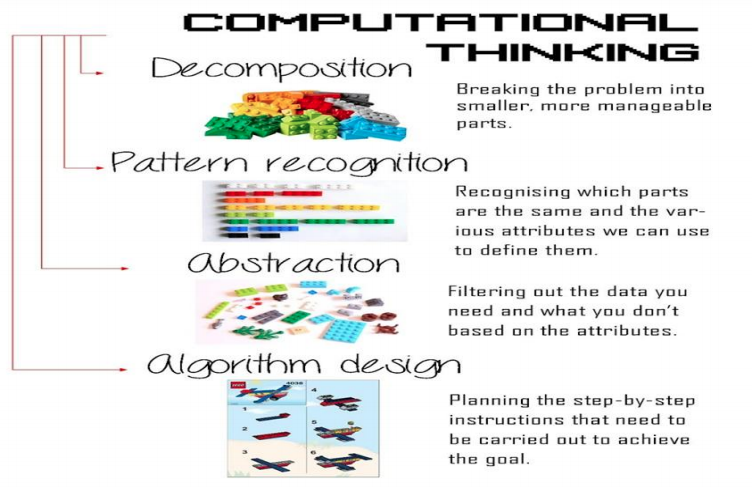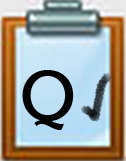Introduction
Computational thinking helps you break down problems into smaller parts so that it is easier to understand and solve them. The process and skill can help you solve problems in any subject area and in life,
This Quest focuses on learning about computational thinking and being able to define or explain what it is.

Source: Jo Culf, CSER MOOC
I Can Statement
- define computational thinking
Vocabulary
Abstraction: Abstraction is filtering out the data you need and what you don’t need. A computer programmer hides all but the relevant data about an object in order to reduce complexity and increase efficiency.
Algorithm: An algorithm is a detailed step-by-step instruction set or formula for solving a problem or completing a task.
Computational thinker: "Students that develop and employ strategies for understanding and solving problems in ways that leverage the power of technological methods to develop and test solutions". (ISTE Standard 5. for Students)
Decomposition: Decomposition is breaking the problem into smaller parts.
Pattern Recognition: Pattern recognition involves finding the similarities or patterns among small, decomposed problems that can help us solve more complex problems more efficiently.
Vocabulary Game
Play the interactive Quizlet Game: Direct Link
Steps
In this first Quest, you are learning about the big picture of computational thinking. In the next four Quests, you will dive deeper into each of the four stages of computational thinking.
- Watch this video by Jules together as a class.
- Review the definitions of computational thinking that is
available as a PDF: Jules Corp Computational Thinking
- Before you begin the next four Quests, you will need to choose a complex problem to work on as you go through the Quests.
- It could be as simple as giving directions to a location, creating a new cookie recipe, how to create a bitmoji, or programming and creating a new computer game/application.
- You and your teacher will choose the problems/projects to work on.
- Look at the different examples on this site to assist you in your thinking: Computational Thinking Projects
- Make a copy of the Computational Thinking Document to use for planning and working through the rest of these Quests.
- Using the Computational Thinking planning document, identify the problem you will be working on using computational thinking.
- Share the document with your teacher.
Additional Resources
Completing this Quest
In order to complete this Quest, you learned about computational thinking, chose a complex problem or project to work on, created a copy of the computational thinking planning document and shared it with your teacher.
Check off this Quest on the 21t4s roadmap
I have completed this Quest and I am ready to learn about Quest 2
Competencies & Standards
MITECS Michigan Integrated Technology Competencies for Students, and
1. Empowered Learner
a. Articulate and set personal learning goals, developing strategies leveraging technology to achieve them, and reflect on the learning process itself to improve learning outcomes
c. Use technology to seek feedback that informs and improves their practice and to demonstrate their learning in a variety of ways
3. Knowledge Constructor
d. Students build knowledge by active exploring real-world issues and problems, developing ideas and theories and pursuing answers and solutions
4. Innovative Designer
a. Students know and use a deliberate design process for generating ideas, testing theories, creating innovative artifacts or solving authentic problems
5. Computational Thinker
a. Students formulate problem definitions suited for technology-assisted methods such as data analysis, abstract models and algorithmic thinking in exploring and finding solutions
b. Students collect data or identify relevant data sets, use digital tools to analyze them, and represent data in various ways to facilitate problem-solving and decision-making
Websites and Documents
Websites
- Code.org Computational Thinking
- Computational Thinking Resources for K-12
- Computational Thinking projects
Videos from Outside Sources
21t4s Videos
21t4s Documents & Quizzes




